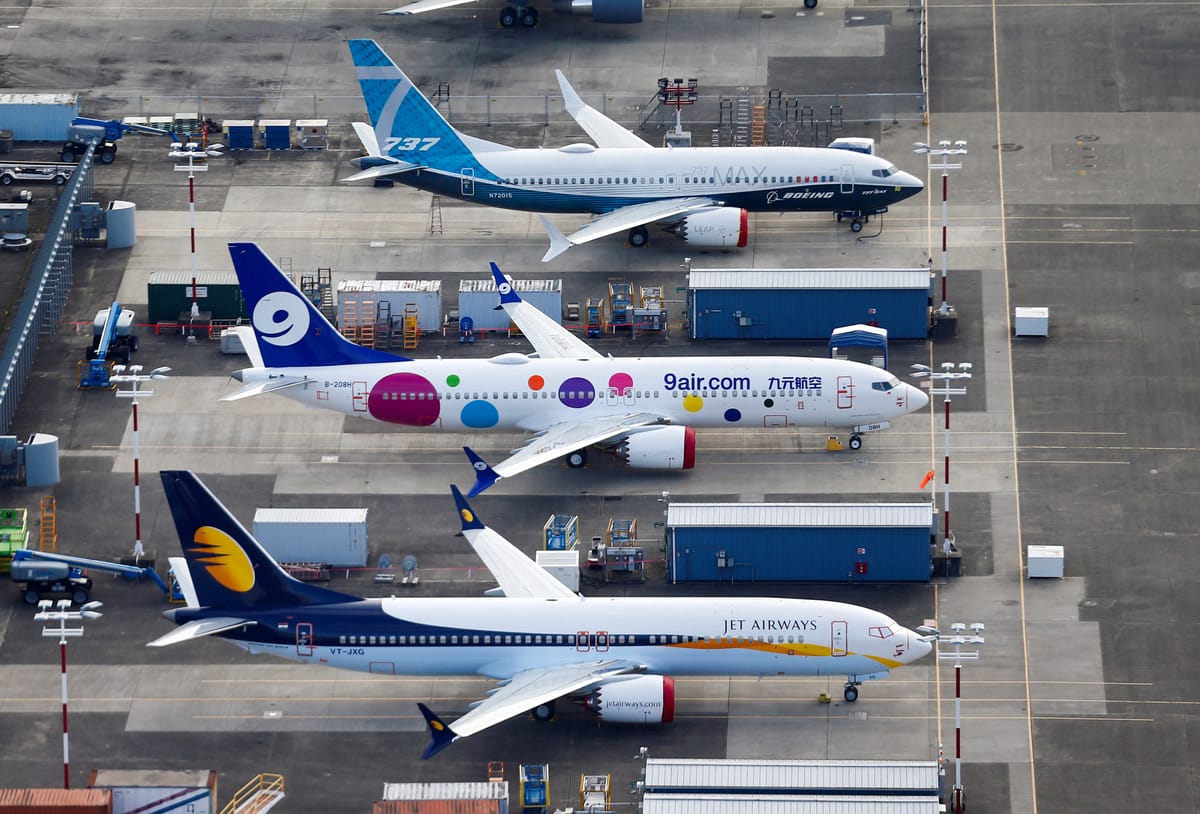A key piece of evidence has been found in the Boeing 737 Max probe
The latest Max incident over the weekend involved a newly-delivered Boeing 737 Max 9.

A few minutes every morning is all you need.
Stay up to date on the world's Headlines and Human Stories. It's fun, it's factual, it's fluff-free.
The backstory: The Boeing 737 Max, initially announced over a decade ago, is one of the most successful generations of aircraft in history – and the most delivered to date. It quickly became popular among airlines, but the generation of the aircraft has been steeped in controversy for years after two fatal crashes in late 2018 and early 2019, resulting in hundreds of deaths. From there, 737 Max fleets were grounded for over 18 months around the world, and although the Boeing 737 Max is in operation today, some airlines still haven’t welcomed it back, with the aircraft still facing challenges.
More recently: The latest Max incident over the weekend involved a newly-delivered Boeing 737 Max 9. A piece of the plane’s fuselage blew out at around 16,000 feet as the Alaska Airlines flight was still climbing from Portland International Airport. While there were no casualties, many have said that it was pure luck that oxygen masks were on and seatbelts fastened when a hole “the size of a refrigerator” opened up on the side of the plane. In 2018, an older model of Boeing 737 had a malfunction in one of the engines, with a piece of it shattering a window, leading to one death after a passenger was partially sucked out of it. After the Alaska Airlines flight incident, aviation authorities grounded 171 of the aircraft variants, with carriers in other countries quickly following suit.
The development: Now, with authorities trying to piece together the investigation, a key piece of evidence has been found in the backyard of a Portland-based school teacher. The missing door plug that had been covering an unused exit door on the plane could be a key piece of evidence in finding out what caused the incident to happen. Although other key pieces of evidence haven’t been recovered, this finding marks a breakthrough in the investigation.
Key comments:
"Passengers in the seats immediately adjacent, or in other seats around it who weren't wearing a seatbelt could have been sucked out of the aircraft … I guess the worst case could be you lose a row full of people and a couple of others standing nearby as well … It could be design, it could be a manufacturing defect, or a combination of the two. Or it could be something else, something unknown," explained aviation consultant and former aircraft accident investigator Tim Atkinson.
“Safety is our top priority and we deeply regret the impact this event has had on our customers and their passengers. We agree with and fully support the FAA's decision to require immediate inspections of 737-9 airplanes with the same configuration as the affected airplane. In addition, a Boeing technical team is supporting the NTSB's investigation into the Jan. 5 accident. We will remain in close contact with our regulator and customers,” wrote Boeing in a statement.
"All of a sudden I heard, like, a big bang. I didn't know exactly what was going on. I look up and the oxygen masks were hanging from the ceiling and then I look to my left and there's this huge chunk, part of the airplane just missing. The wind is just extremely loud, there's wind blowing everywhere," one passenger told CBS News.




Comments ()